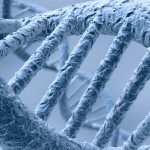Link to Pubmed [PMID] – 24753568
Proc. Natl. Acad. Sci. U.S.A. 2014 May;111(18):6768-73
The genus Yersinia has been used as a model system to study pathogen evolution. Using whole-genome sequencing of all Yersinia species, we delineate the gene complement of the whole genus and define patterns of virulence evolution. Multiple distinct ecological specializations appear to have split pathogenic strains from environmental, nonpathogenic lineages. This split demonstrates that contrary to hypotheses that all pathogenic Yersinia species share a recent common pathogenic ancestor, they have evolved independently but followed parallel evolutionary paths in acquiring the same virulence determinants as well as becoming progressively more limited metabolically. Shared virulence determinants are limited to the virulence plasmid pYV and the attachment invasion locus ail. These acquisitions, together with genomic variations in metabolic pathways, have resulted in the parallel emergence of related pathogens displaying an increasingly specialized lifestyle with a spectrum of virulence potential, an emerging theme in the evolution of other important human pathogens.


